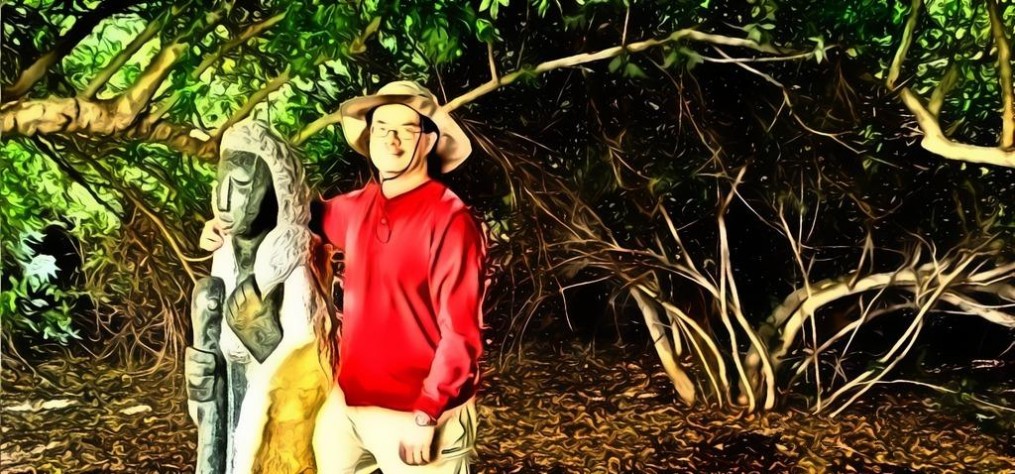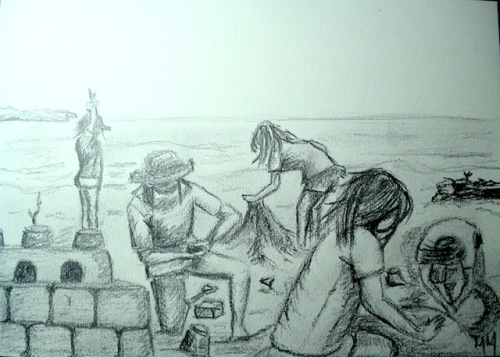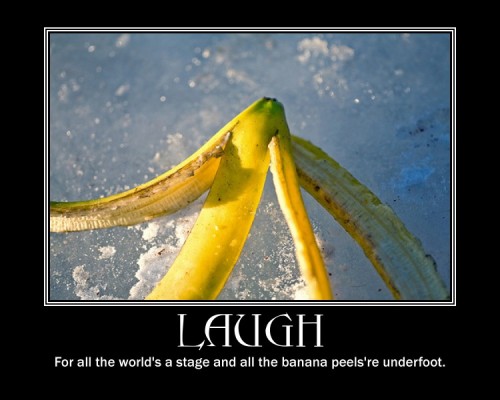Remember those days when the snow first fell and the streets froze and you just couldn’t wait to get outside and play?
 DSC_3643 © 2006 TruthLying | more info (via: FlickrStorm)
DSC_3643 © 2006 TruthLying | more info (via: FlickrStorm)
The first snowfall usually happened at night and, if it was early enough in the evening, you got to marvel at the many-colored flashes of tiny crystals fluttering to Earth and the multihued sparkle of snow twinkling in the building drifts.
Or maybe the first snow fell during the day and you inhaled upon seeing big fluffy white pillows sprinkling toward Earth, some melting but some also blanketing the yard or field or grove of spiring trees.
Perhaps it was long ago? Perhaps it was this year? Perhaps you were only a child or you rejoiced into adulthood?
Either way, you know you wanted to play.
Playing in Public
George Couros recently challenged his PLN to sketch people, particularly children, Playing in Public and document the process of sketching in a video.
The first to respond to this challenge (actually her response resulted in the challenge going public) was Malyn Mawby. Her terrific sketch and video set the bar high for future responses.
It also inspired my sketch.
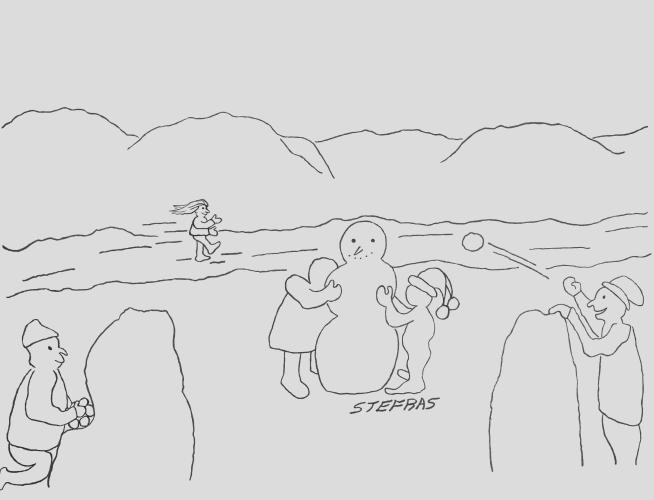 Playing in Public © 2011 Shawn Urban | more info (via: Stefras)
Playing in Public © 2011 Shawn Urban | more info (via: Stefras)
This sketch features children playing in the snow: building snowmen, sliding on the frozen river covering the pavement and throwing snowballs from behind snow forts.
medium: pencil – HB2
time: 2 hours (draft and trace)
digitizing: 6 photos – 6 minutes
editting photos: 6 hours (see below)
The Concept
In the Northern Hemisphere, Winter is approaching and snow is beginning to fall. I found this in stark contrast to Malyn’s sketch of her girls playing on the beach. I also recognized that Malyn lives in Australia where Summer is just about to begin. What an opportunity, I thought, to illustrate that play is an all-year activity!
I was inspired also by the recent first snow that we experienced this season and my desire to build a snowman with my nephew. It will be too cold and the snow too dry to build a snowman when he does visit his uncle. So this sketch expresses a dream as much as anything.
I also recognized that sculpting of sand castles and snowmen and snow forts was similar enough to deepen the parallels between Malyn’s sketch and mine.
The children in my sketch are generic, pulled out of my head. I did not have anyone in mind, nor did I sketch from any photographs. I liked Malyn’s illustration of distance and collage in her sketch and tried to emulate these. However, unlike the children in Malyn’s sketch who are her girls over several years, the children on my sketch are contemporary. I think Malyn’s use of time to sketch her girls is personally nostalgic to her, so I did not want to replicate that effect and affect.
My decision to design the sketch as I did was strongly influenced by my own nostalgia: my memories of building snowmen and forts, of throwing snowballs and of sliding down an icy road, all in the name of play and fun. I remember also making snow angels, skiing cross-country and downhill, tobogganing, building quinzees, playing tag and hockey, and snowshoeing, but the sketch had only so much room.
Play is engaging in an activity to gain a state of flow. It does not necessarily need to be outside nor involve many people. Sketching, like the sketches Malyn and I produced, are also play, as is engaging in some work, such as wood carving or even math problems.
I write, paint and learn for fun. Everyone does something different.
The Process
The Sketch
I drew my sketch in three drafts. The first draft was just a small ghostly outline to develop my concept and place and frame subjects. My second draft was a full-page (8.5″ by 11″) sketch that probably was the better draft. It was more freehand and wispy, much like Malyn’s; however, I sketched it on a scrap sheet and the type on the opposite side of the sheet was clearly visible. I inked in the second draft and traced it systematically to produce the final sketch.
I am a mediocre drawer at the best of times and often rely on paint (oils) to bury my sketchy drawings. This time I did not have that luxury and, in Malyn’s words, my sketch is naive. (Yeah, there really is such a style; I was astonished when I learned this.)
Like Malyn, I have trouble with faces and hands. In my case, mitts served to bury hands. But my faces were a problem. I wanted to show enjoyment, so I needed to draw faces.
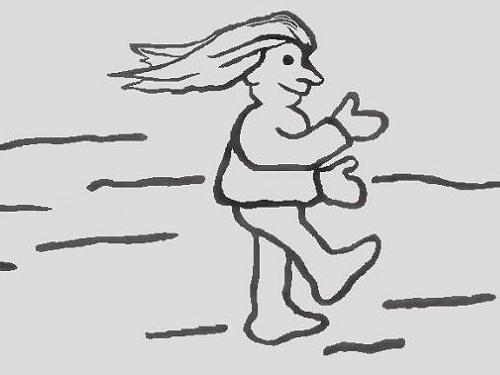 Playing in Public (inset) © 2011 Shawn Urban | more info (via: Stefras)
Playing in Public (inset) © 2011 Shawn Urban | more info (via: Stefras)
Yet, all the noses I sketched are gigantic. Additionally, the faces are masculine. Look closely at the girl sliding on the road. If she didn’t have hair, she would be another boy in a male dominated sketch! Insincere political correctness aside, I wanted to show girls and boys playing together, so I wanted some girls. That slider was a nightmare to sketch. It took some heavy editting just to imply she was indeed a girl and not some guy with a strange toque or wig on his head. Notice, no one else on the sketch has hair!
So sketching was definitely a fun and often comic challenge.
The Photographs
I took pictures of the third draft of the sketch at various intervals during its creation. A tripod and frame to place the sketch in would have helped with squaring, leveling and maintaining the same height for each photo. The photos I took came out with my sketch crooked and even trapezoidal. I ended up editting each weird product of my photography with Windows Paint, even though it took hours to do so.
In hindsight, I could have taken one photograph of the final sketch and deleted objects as I saved the editted sketch. This would have made an even smoother video, but it rang of cheating to me. I was rather enjoying sketching, photographing, sketching and repeating the process.
The Video
Below is the final video of my sketch. Enjoy.
I used Windows Movie Maker to create the video. The audio was clipped from Play in the Snow, a 1945 education film in the public domain and presented by Encyclopedia Britannica Films on Prelinger Archives. I used RealPlayer to trim and convert the film’s MP4 video into MP3 audio clips, so I could use these in my video.
The sound is a bit crude and out of step, but it carries the spirit of kids enjoying the Winter season.
Troubles with George
In his challenge, George forgot to mention that he wanted a silent video. So I spent hours adding audio to my video, only to get a tweet that silence works best. Fine, I can do that. George then also asked for a video in MP4 or AVI format. Okay, I’ll see what I can do.
It was not as obvious as it looked!
I was only following Malyn’s lead.
How do I convert RV and WMV into MP4 or AVI on my machine? I searched RealPlayer. I searched Windows Media Player. I searched Windows Movie Maker. Hmm! This was a problem.
I finally did discover how to save my original Movie Maker project as an AVI. The option was not as obvious as you might think. I also removed all the sound from the project. So, this is easy. Save. Check and test to make sure the new format took.
213 MB!
Are you kidding me? That is 40 times larger than the RV and WMV versions with sound. This is six photos stitched together in a video folks. What went into that 213 MBs?
Okay. Upload the silent video into George’s dropito.me box to go with the RV and WMV versions, with audio, that I already uploaded.
Forty two minutes later, the silent video is finally uploaded!
Watermark? What watermark?
I replay the silent video on my computer. No watermark! Perhaps it is a dropito.me thing?
So, I upload the 213 MB video into my Teaching Resources webspace. Another 42 minutes later, the silent video is ready again.
It works!
Troubles with George!
Reflecting on Fun
This was a fun project, even the part regarding the enormous silent video. Playing is engaging in any activity that leads to a state of flow. In this case, humour also played a big part. George can ask me to create another video for him any time.
Follow @stefras